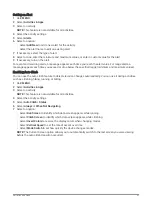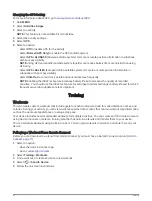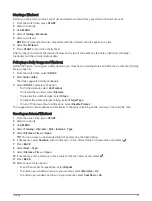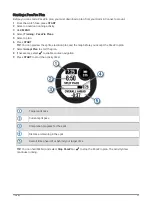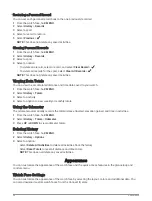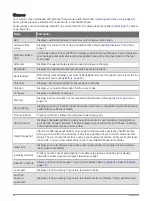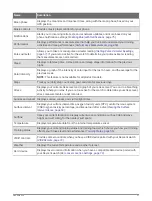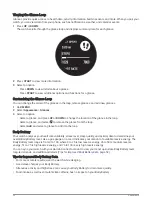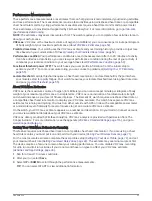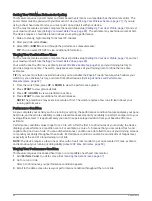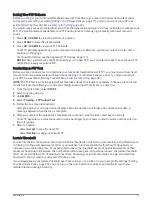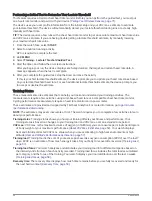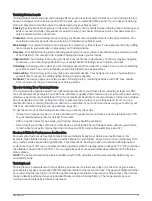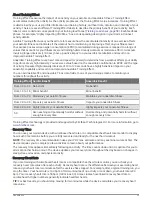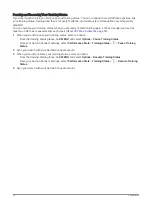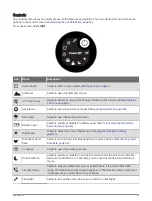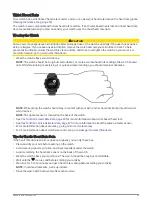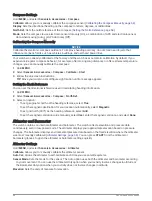
Getting Your VO2 Max. Estimate for Cycling
This feature requires a power meter and wrist-based heart rate or a compatible chest heart rate monitor. The
power meter must be paired with your Descent G1 device (
Pairing Your Wireless Sensors, page 71
). If you are
using a chest heart rate monitor, you must put it on and pair it with your device.
For the most accurate estimate, complete the user profile setup (
Setting Up Your User Profile, page 79
) and set
your maximum heart rate (
Setting Your Heart Rate Zones, page 80
). The estimate may seem inaccurate at first.
The device requires a few rides to learn about your cycling performance.
1 Ride at a steady, high intensity for at least 20 minutes.
2 After your ride, select Save.
3 Select UP or DOWN to scroll through the performance measurements.
TIP: You can select START to view additional information.
Viewing Your Predicted Race Times
For the most accurate estimate, complete the user profile setup (
Setting Up Your User Profile, page 79
), and set
your maximum heart rate (
Setting Your Heart Rate Zones, page 80
).
Your watch uses the VO2 max. estimate (
About VO2 Max. Estimates, page 53
) and your training history to
provide a target race time. The watch analyzes several weeks of your training data to refine the race time
estimates.
TIP: If you have more than one Garmin device, you can enable the Physio TrueUp
™
feature, which allows your
watch to sync activities, history, and data from other devices (
Syncing Activities and Performance
).
1 From the watch face, press UP or DOWN to view the performance glance.
2 Press START to view glance details.
3 Press UP or DOWN to view a predicted race time.
4 Press START to view predictions for other distances.
NOTE: The predictions may seem inaccurate at first. The watch requires a few runs to learn about your
running performance.
Performance Condition
As you complete your activity, such as running or cycling, the performance condition feature analyzes your pace,
heart rate, and heart rate variability to make a real-time assessment of your ability to perform compared to your
average fitness level. It is approximately your real-time percentage deviation from your baseline VO2 max.
estimate.
Performance condition values range from -20 to +20. After the first 6 to 20 minutes of your activity, the device
displays your performance condition score. For example, a score of +5 means that you are rested, fresh, and
capable of a good run or ride. You can add performance condition as a data field to one of your training screens
to monitor your ability throughout the activity. Performance condition can also be an indicator of fatigue level,
especially at the end of a long training run or ride.
NOTE: The device requires a few runs or rides with a heart rate monitor to get an accurate VO2 max. estimate
and learn about your running or riding ability (
About VO2 Max. Estimates, page 53
).
Viewing Your Performance Condition
This feature requires wrist-based heart rate or a compatible chest heart rate monitor.
1 Add Perform. Cond. to a data screen (
Customizing the Data Screens, page 37
).
2 Go for a run or ride.
After 6 to 20 minutes, your performance condition appears.
3 Scroll to the data screen to view your performance condition throughout the run or ride.
54
Appearance


